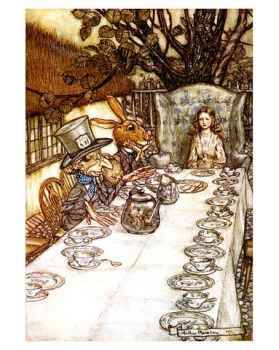Take The Lord of the Rings and move it to 12th Century Japan. Substitute a sword for the rings. Combine Shintoism, Buddhism, and a warrior ethic. Base it on a historical power struggle between three families, including a former human Emperor who has become a demon, the daughter of the Undersea Dragon King who became a mortal, and an Emperor who became a kami.
The stories of the Genpei War are to Japan what the Iliad is to the Western world--part myth, part fact, where gods and goddesses interfere in the course of human events. Or do they? For these stories illustrate a deeper truth: that it is all to often our human failings that lead to our destruction. Our pride, our hubris, our stubbornness, our mistrust, sometimes even our loyalty are more than enough.
Kara Dalkey has taken an ancient Japanese tale and, by her own admission, simplified the story line somewhat so that those not familiar with Japanese culture and history can enjoy it. I cannot boast any in-depth knowledge nor familiarity with Japanese culture, but I didn't need any for this story. A map at the front of the book allowed me to follow the movement of the different groups of people across the islands. The red torii gate at Miyajima, built in the water of the Inland Sea, plays an important role in Genpei as well.
The story concerns the rise and fall of two noble warrior families: the Taira and the Minomoto. They struggle to influence and control the Imperial Family, who have internal power struggles of their own. The Undersea Dragon King strikes a deal with the head of the Taira clan: the Taira will triumph over the Fujiwara clan, who currently have administrative power, and a Taira will one day be Emperor. In return, the Taira chief has only to do three things: take the Dragon King's daughter as his principal wife and let her advice guide him, build a shrine to the Dragon King at Miyajima, and return the sword, Kusanagi, to the sea.
Kusanagi is one of the three Imperial Regalia, which are more than mere symbols of the Emperor--they bestow legitimacy on his rule. (The others are the sacred mirror, used to call Ameratsu, the Sun Goddess, out of her cave, and the Imperial Jewel, a piece of jade. Ameratsu is the Goddess from whom all Emperors are descended.)
But the Taira are not the only ambitious clan, nor is the Dragon King the only kami overseeing the fortunes of a mortal family. The Minomoto clan have the great Hachiman on their side. Hachiman was a warrior and Emperor, renown for his bravery and wisdom, who became a kami after his death.
There is intrigue among the brothers of the Imperial Family as well. An Emperor may retire and become a monk, but that does not mean he gives up intrigue and manipulation. Retirement may be voluntary or forced and the legitimacy of whomever sits upon the throne is often suspect.
The middle of the story drags, in part because so many palaces are burned so many different times by people whose names are so similar that it's easy to lose track. The main characters, however, are brought down mostly by their own flaws and I found myself feeling sorry for them as they moved to their inevitable fate. For one does not renege on a promise to a kami or play with demons without serious consequences.
The Genpei Wars marked the end of an era in Japanese history, so the ending of Genpei is bittersweet.
Hopefully, I'll be visiting Japan next year and will get to see Kyoto, which I suspect is Heian Kyo in the book, and Tokyo, which was Kamakura. I'd also like to see Miyajima and the famous red torii gate. I'm eager to compare the descriptions in Genpei and see if they match anything that remains in the museums and ancient castles today. So, anticipation of my visit has definitely heightened my interest in this story.
On the March Hare scale: 4 out of 5 Golden Bookmarks. But this is definitely a "niche" book and not to everyone's taste.
Tuesday, August 15, 2006
Book Review: Genpei, A Fantasy
Posted by
March Hare
at
10:44 PM
![]()
Subscribe to:
Comment Feed (RSS)




|